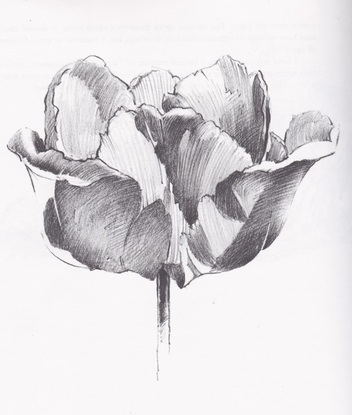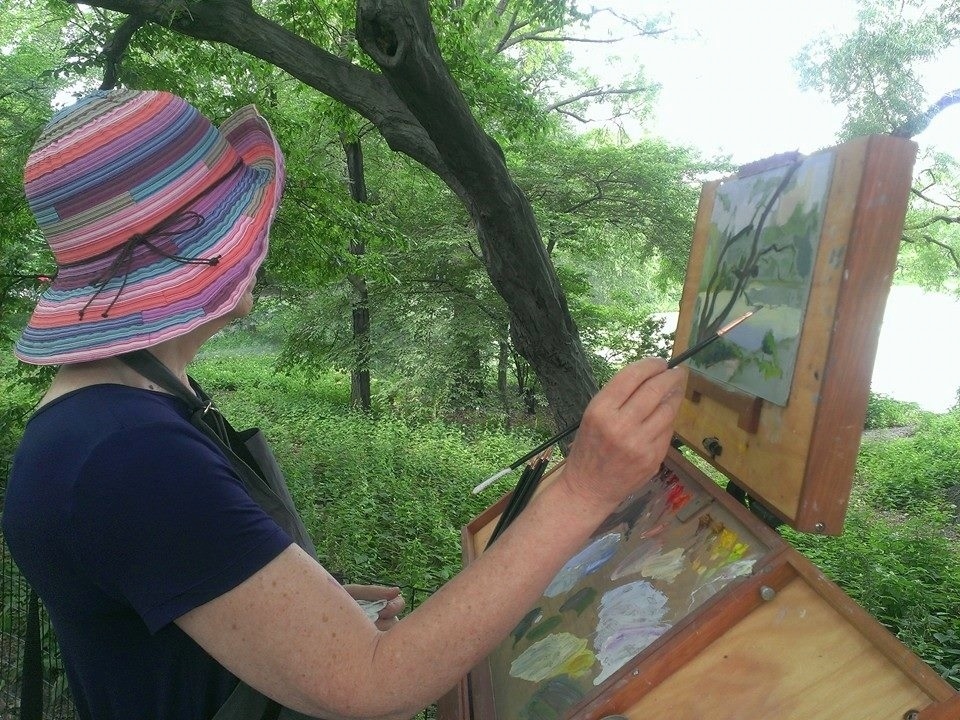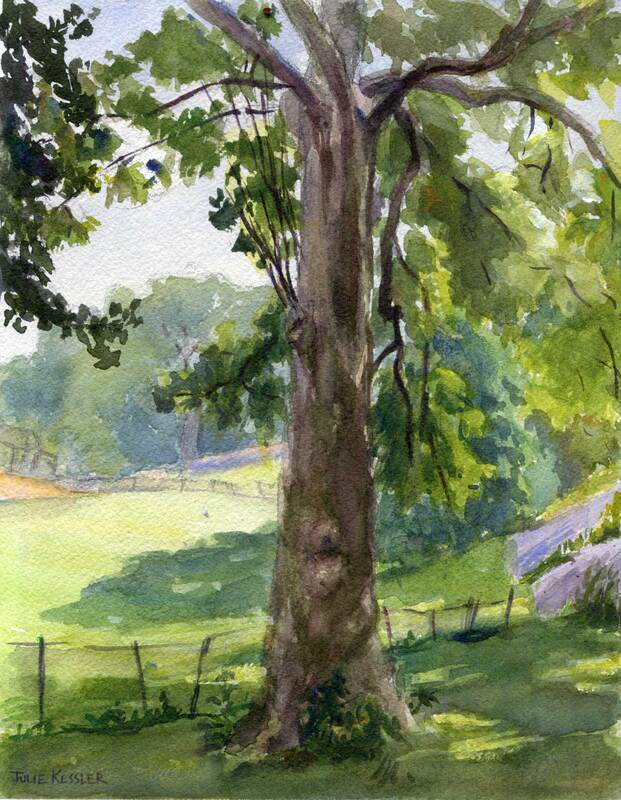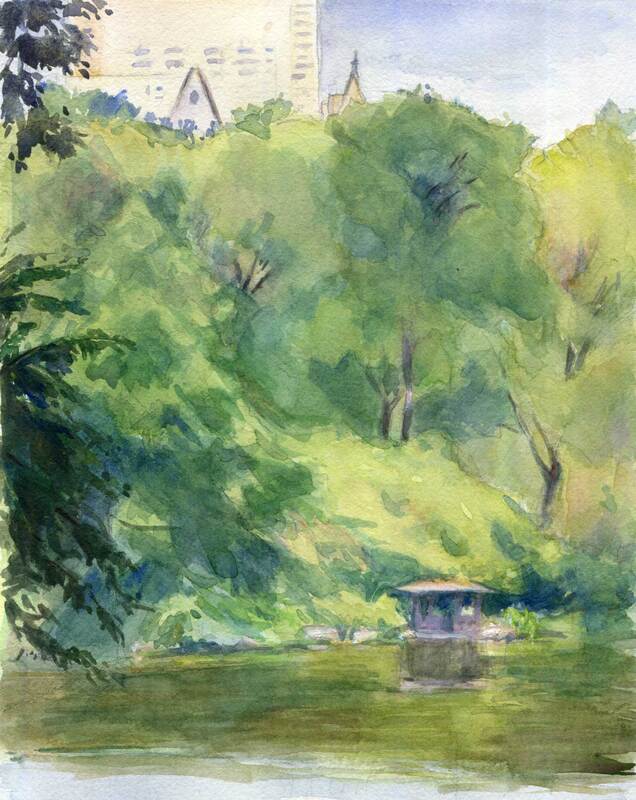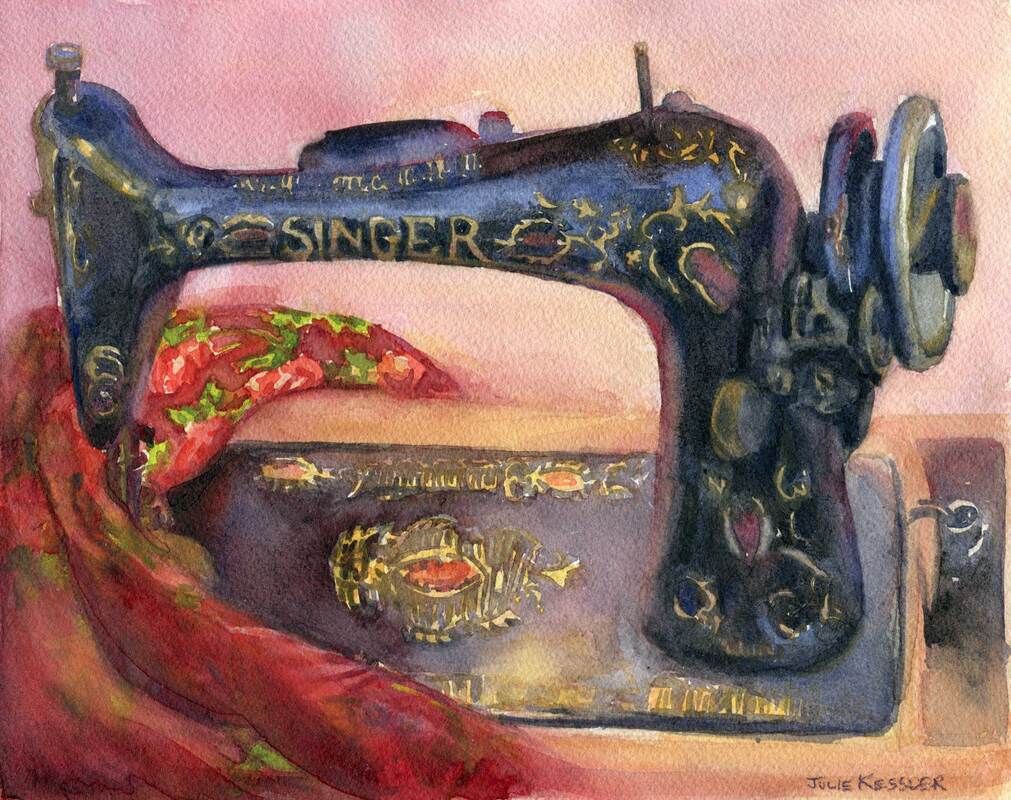|
Okay. So it's not The Godfather or Lord of the Rings. And it's only a minute and a half. But ta-da! It's my directorial debut, lol. Anyway, I'm so pleased that I finally figured out how to make a video slideshow of my latest gouache still life paintings. And ... it's uploaded onto my Youtube channel. For all the world to see.
I do hope you'll visit Youtube and click the thumbs up button ... you'll find it below the video on the right. It'll be a hu-u-uge help for an artist, and you'll be doing your good deed for the day. Enjoy!
0 Comments
Having a shoulder injury is never a helluva lot of fun. However, it's a real stinker when it prevents me from painting. Sigh. Still, an artist must keep muddling on. And one way to keep sane during the healing process is to practice my drawing skills. Because drawing doesn't require raising my arm. If I work small. Crisis = Danger + OpportunityThe authenticity of this old Chinese saying seems to be in question. But authentic or not, it sounds smart and I'm sticking with it. So I picked up one of those wonderful old-fashioned Watson-Guptill art instruction books. The Art of Pencil Drawing by Ernest W. Watson himself. The book features his gorgeous "painterly" pencil drawings, and he generously explains his materials and methods for making them that way. That alone would be precious information. But there's more to Watson than just a simple "how to". He also explains why making a sketch or drawing transcends merely recording what you see.
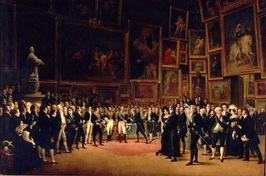 Charles V Distributing Awards to the Artists at the Close of the Salon of 1824 by François Joseph Heim Charles V Distributing Awards to the Artists at the Close of the Salon of 1824 by François Joseph Heim For French artists during the 19th century the Paris Salon was the place to be. Artists must have gone half mad while waiting to hear if their work had been accepted into the show. And no wonder. The Salon was an official juried exhibit that could make or break an artist. It was the only place where they could display their work in public, and it was held just once a year. Success at the Salon could potentially lead to celebrity, prizes and commissions. Conversely, receiving the jury's rejection slip meant being left out in the cold.  Self Portrait, by Thomas Hart Benton Self Portrait, by Thomas Hart Benton Thomas Hart Benton, an American artist (1889-1975), was only 5’3” but had a cantankerous, larger-than-life personality. He came across as a plain-talking, small-town roughneck, but in reality he was educated in Chicago and Paris, and came from a prominent Missouri family. Early in his career Benton lived in New York City, experimenting with abstract compositions and following the latest art world trends. But they didn't take. So he turned with a vengeance to a representational style, and antagonized artists and critics with his hot-tempered heckling. When he finally got fed up with the New York art establishment, Benton moved back to the Midwest. There he joined a Regionalist art movement that painted everyday people in a distinctly American landscape. Recently I had the pleasure to watch Thomas Hart Benton, a 1988 documentary by Ken Burns. This fascinating introduction to the artist’s complicated and dynamic personality inspired me to pay a visit to the Benton mural, America Today, now residing at the Metropolitan Museum of Art. The mural, a series of ten panels originally commissioned by the New School for Social Research in 1930, was sold to AXA Equities in 1984, and then given to the Met in 2012. You can watch a video about the Met’s acquisition here. |
Julie Kessler
I'm a representational painter enchanted by the unique qualities of watercolor. Sometimes oils, gouache, colored pencils and other media call to me too. I started this blog to share my work and ideas about making art. Sometimes I toss other things into the mix. Such as painters I love, and art books and exhibits that inspire me. Your comments are welcome. I'd love to hear from you! Recent PostsCategories
All
|
